Sights Along the Canal
As you transit the Panama Canal there are plenty of things to keep a lookout for:
Caisson – Safety in the Culebra Cut – Buoys – Lighthouses – Leading Marks – Canal Maintenance – Crocodiles – Manatees – Vultures – Mahogany Tree Stumps – US Military Relics – Panama Canal Railway – Tourist Boat Tuira II – Tourist Boat Fantasía del Mar – Tourist Boat Pacific Queen – Tourist Boat Islamorada – Smaller Tourist Boats – Private Yachts
Caisson
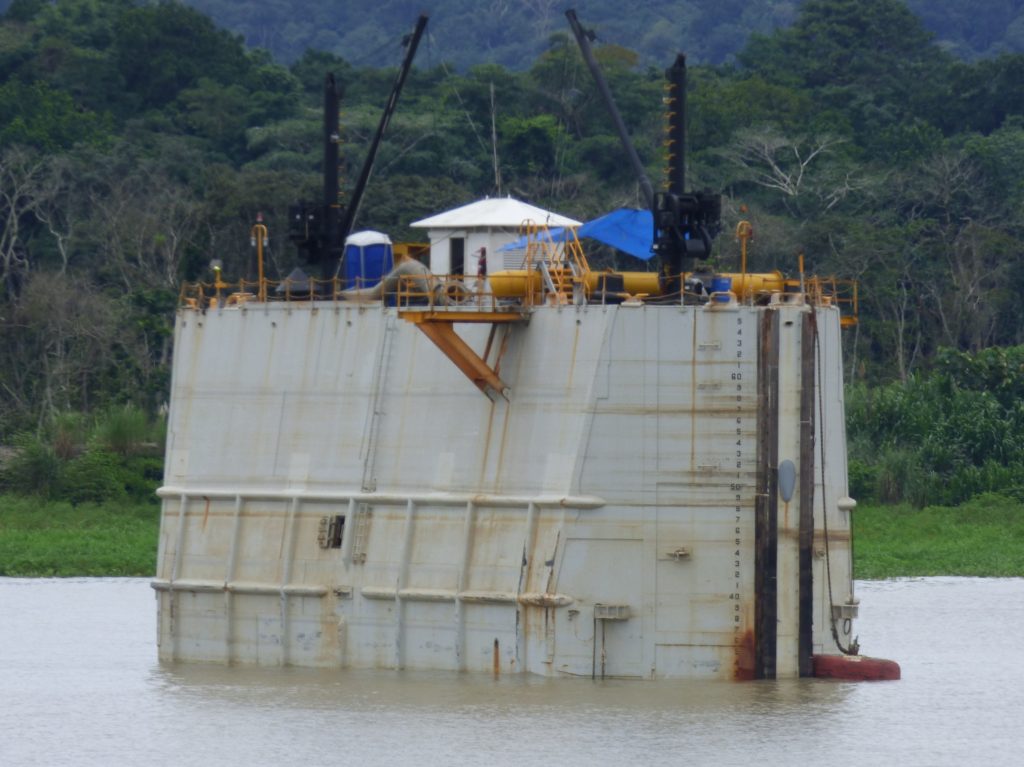
This is a large watertight chamber which is open at the bottom. Water is kept out using pressurised air, so that construction work may be carried out underwater.
The caisson is used for maintenance in the lock chambers.
Safety in the Culebra Cut
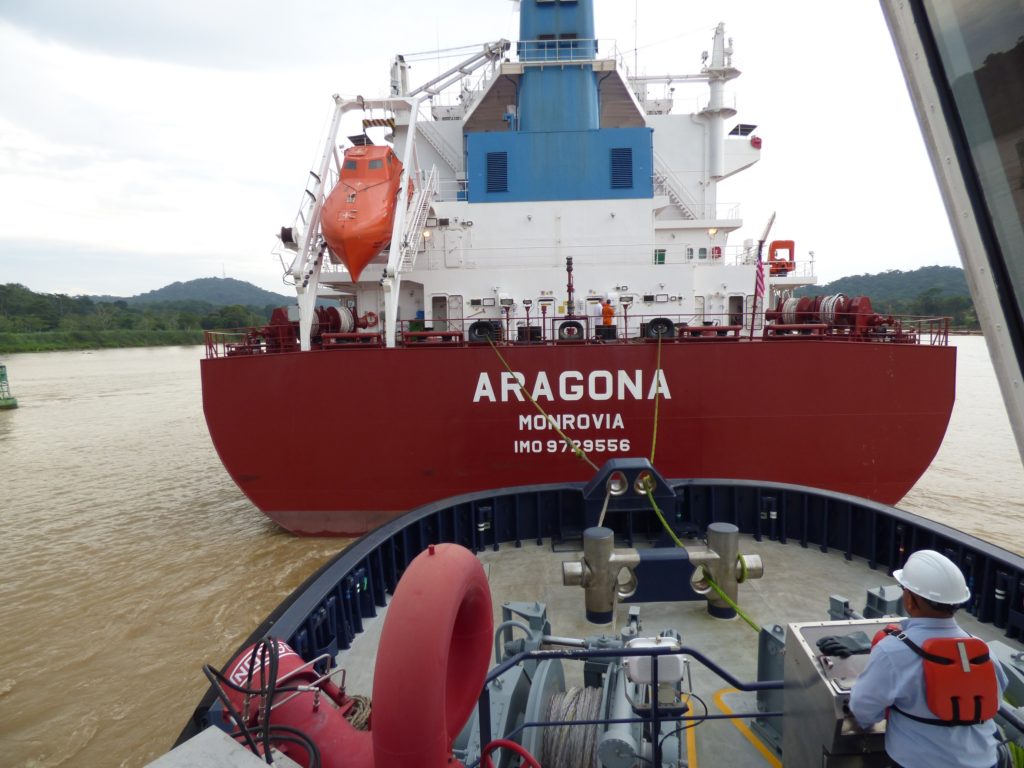
Between Gatun Locks and Gamboa there are several ACP-designated ‘beaching’ areas where ships in distress can exit the buoyed channel and await help.
In the Culebra Cut there are no such areas, so every commercial vessel over 90 feet wide must be accompanied by at least one ACP tug, which is usually located on the stern of the ship.
Navigation is restricted in the Cut so that two large vessels cannot pass each other. This means the entire Canal operations operate around a schedule whereby northbound ships travel in the morning and southbound in the afternoon. A lot of the ships at anchor on Lake Gatun in the morning are waiting for the reverse in traffic.
Buoys
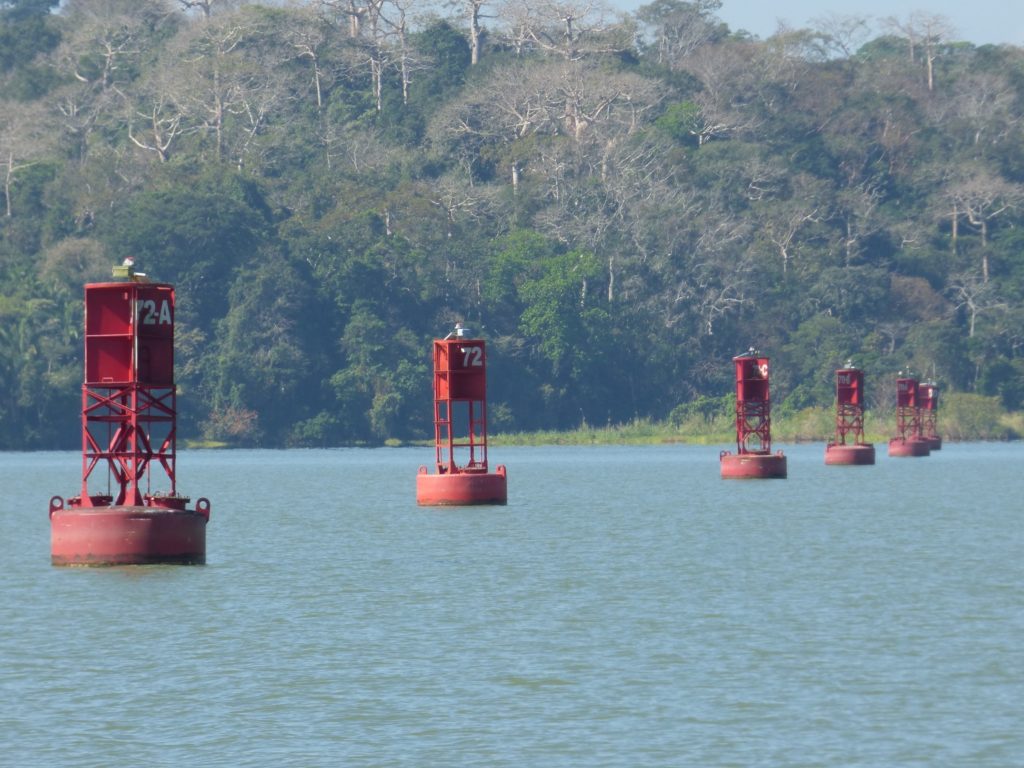
The main channel of the Canal had 289 permanent buoys when we wrote this, but the number is constantly expanding as the channels are being dredged and altered.
Lateral buoys located north of the Pedro Miguel Lock are painted red to indicate the west side of the channel and green to indicate the east side. The colours reverse south of Pedro Miguel Lock.
Note that there are multiple navigation buoys with the same number. Look out for 60¼ and 60½ and the others marked A, B, C etc. Additional buoys have been added over the years to improve navigation, and instead of renumbering all the buoys, letters were used.
Lighthouses
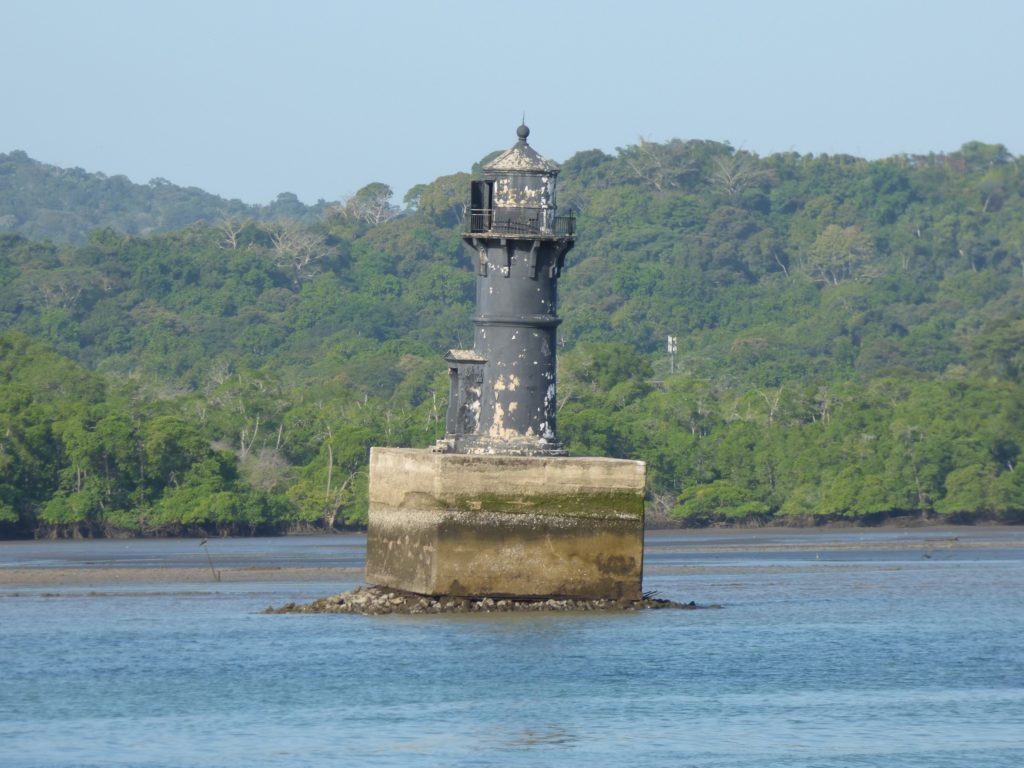
There are 40 lighthouses on the Canal, of which two are on Barro Colorado.
The oldest lighthouses are located in Punta Toro in the Atlantic and Flamenco in the Pacific, both dating from the period of construction of the Canal by the French, between 1881 and 1898.
Leading Marks
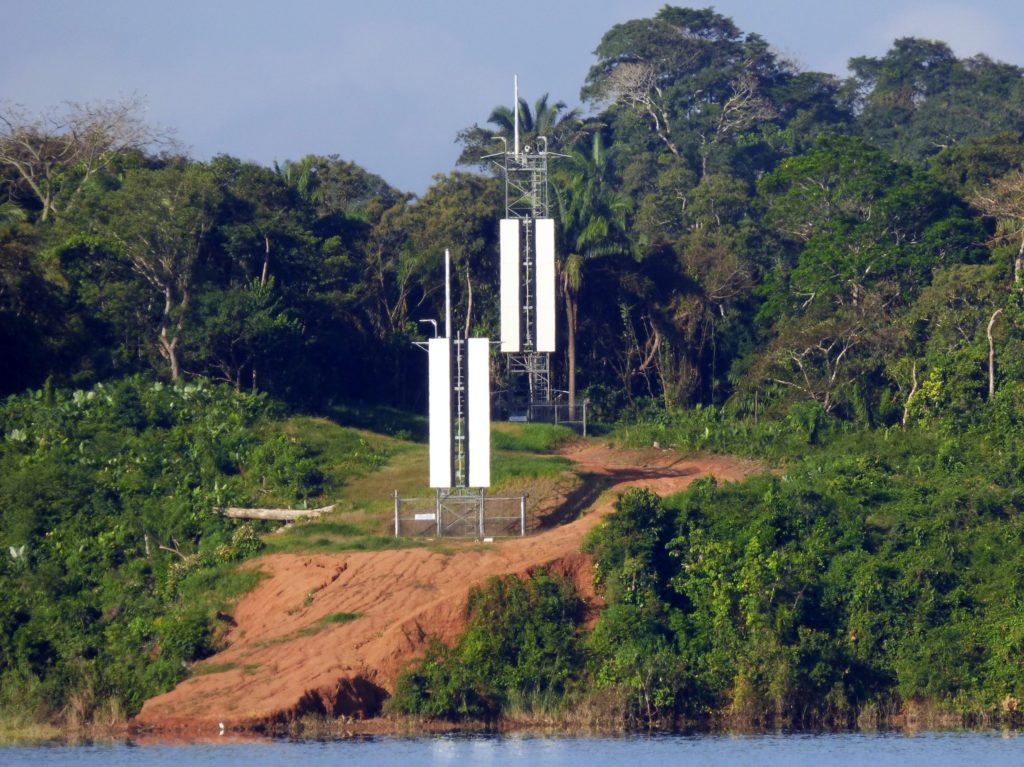
The Panama Canal does not run in a straight line, so as well as the buoys and lighthouses marking the edges, there are many leading marks indicating the direction of the channel.
These are pairs of structures with lines down the middle. When the Pilot can see them in line with each other he or she knows that the vessel under their command is in the centre of the channel.
The marks are lit at night and are in the process of being updated with coloured lights.
Crocodiles
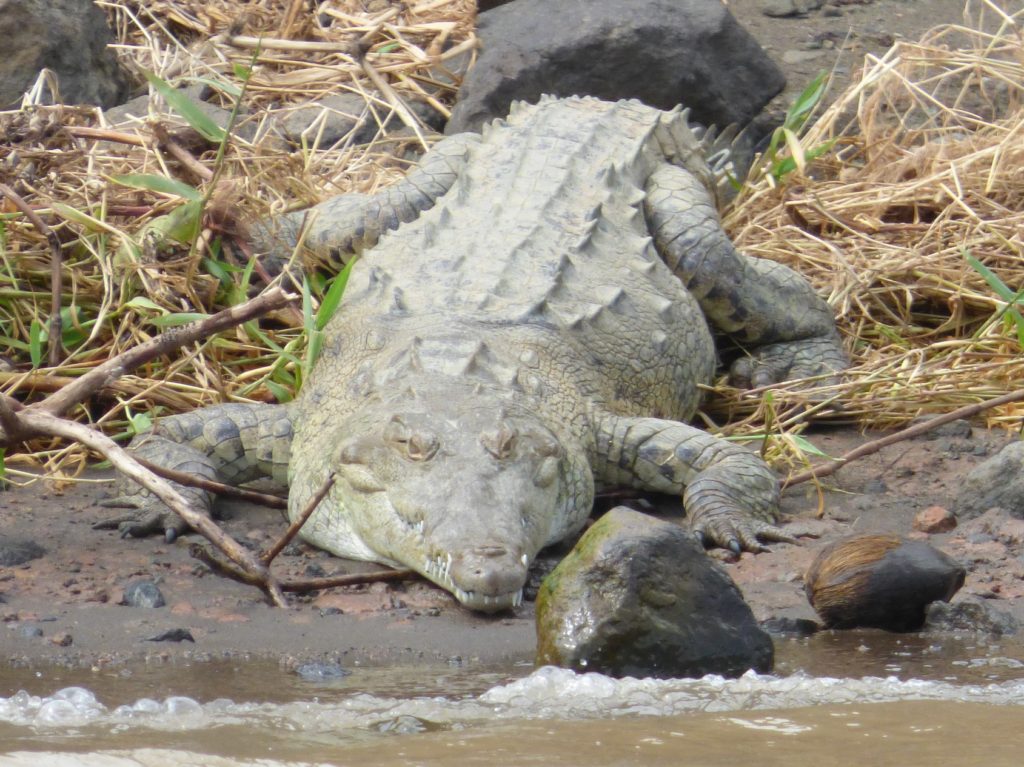
Crocodiles (salt and fresh water) up to 4-6 metres in length have been seen in the Canal waters. Your best bet for spotting a crocodile will be on the banks of the Canal along the Culebra Cut (just past the town of Gamboa), but they are sometimes in the locks themselves.
In 2015 they removed an 800-pound crocodile from Lake Gatun.
Manatees
Manatees are believed to have been introduced in Lake Gatun in 1964 by the former Panama Canal Commission as part of an aquatic vegetation control program. However, a few years later, some of the manatees escaped during a storm, and shortly after the remaining manatees were released and the program was abandoned.
We have heard them in Lake Gatun but only at night so no photo yet!
Here is an article about a recent study of the manatees.
Vultures

As much as everyone wants to see toucans and tropical birds, the most likely birds you will see are the black vultures that are abundant in Panama.
The most common is the Black Vulture (Coragyps atratus) or American Black Vulture. They are found from southeastern United States to central Chile and Uruguay in South America, and they play an important role as scavengers.
They are entirely black except for a prominent white patch at base of primaries, which is visible in flight.
Mahogany Tree Stumps
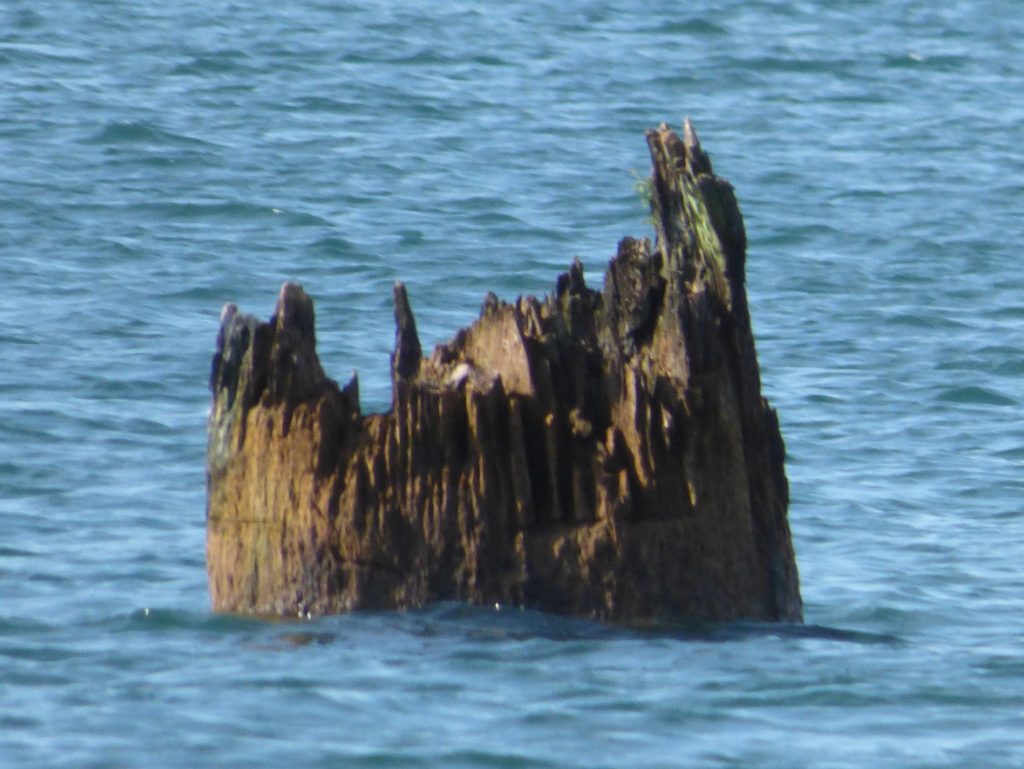
If you transit Lake Gatun when the water level is low you will see the remains of the trees that were covered when Lake Gatun was formed.
Coast Eco Timber are harvesting some of the wood, but you will see that there are plenty of stumps around, which is a lot of the reason why smaller recreational vessels you are not allowed to explore the lake.
US Military Relics
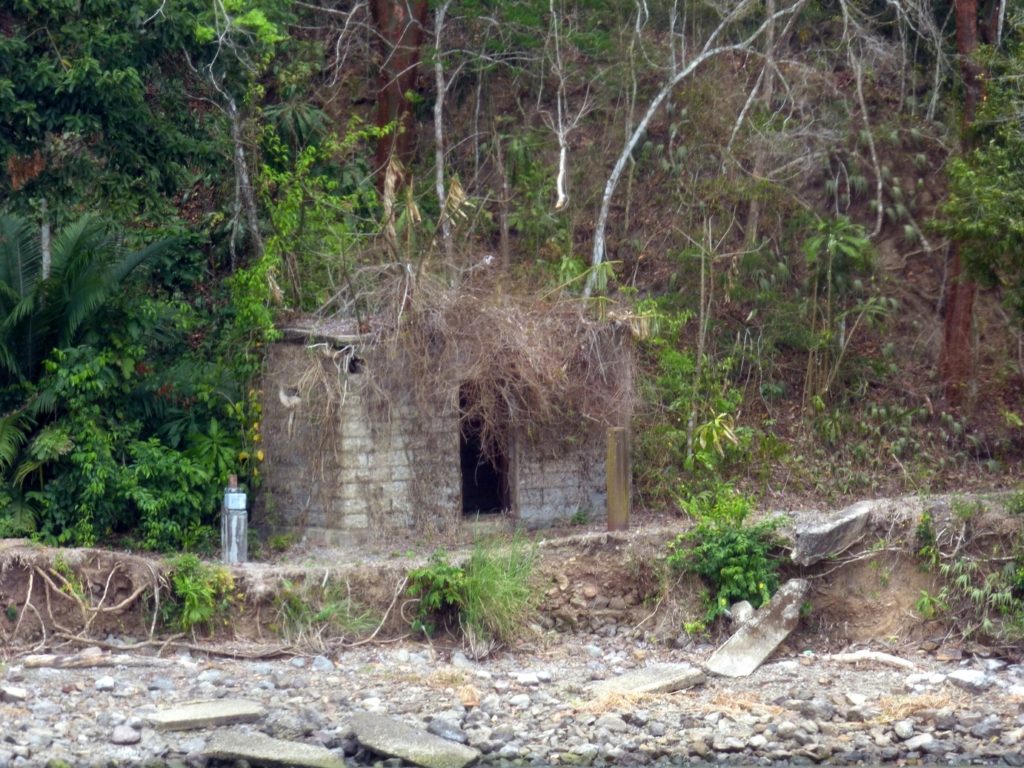
The US military had more than a dozen installations throughout the Canal Zone, and there are many structures slowly being reclaimed by the rainforest.
Panama Canal Railway
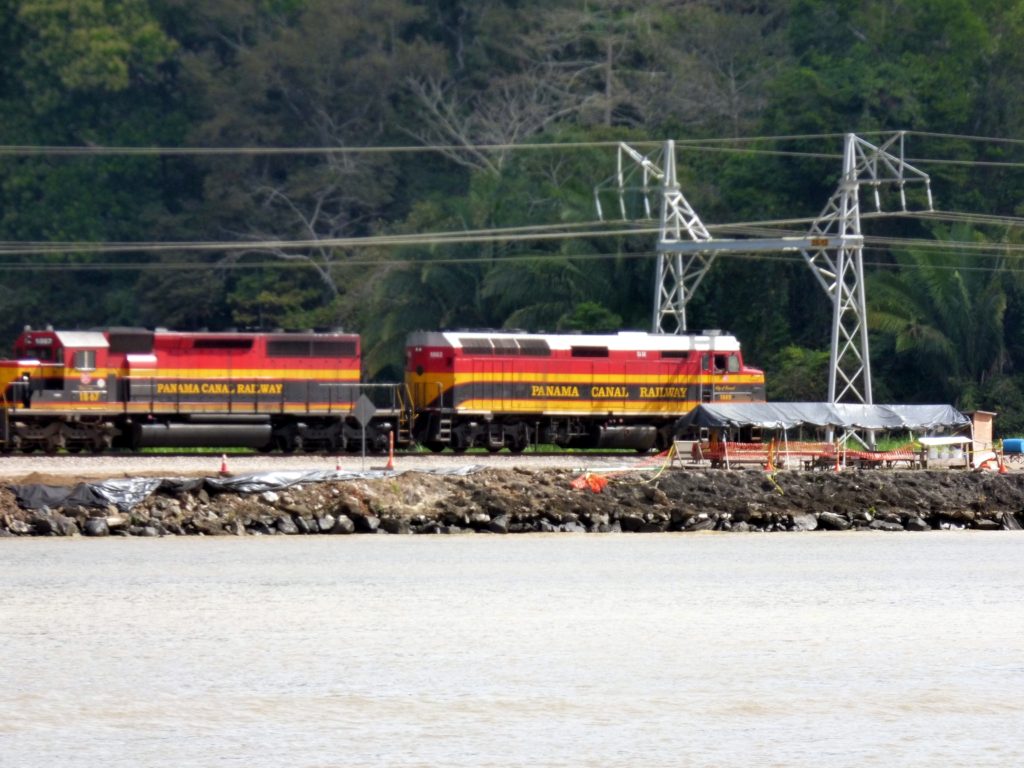
The Panama Canal Railway was the first transcontinental railway in the world.
The first track was constructed between 1850-1855 in response to the 1849 California gold rush. The Panama Canal Railway Company proved to be a veritable cash cow with one-way fares as much as US$25. The one-way fare today is? You guessed it, US$25!
The vintage dome car was built for the Southern Pacific Railroad in 1938.
The train runs parallel to the Canal, 47.6 miles from Colón to Balboa in Panama City, and will be on your port side.
Today a tourist train runs once every day departing at 07:15 from Panama City and back from Colon at 17:15.
The primary function of the railway today is to move some 1,500 containers a day between the Atlantic and Pacific ports, on trains with up to 55 flatbeds or double-stacks. This is done for container vessels, which are too large for existing lock chambers, and also to move empty containers.
Tourist Boat Tuira II

Tuira II (35.8 x 10.82 metres) has capacity for 492 passengers with two large decks. It was built in the US by Willey Manufacturing Co.
Cruises offered by Canal and Bay Tours (www.canalandbaytours.com).
This might be offered as an excursion from your ship as it is the largest tourist ship operating on the Canal. Of course you will experience the Canal on your transit. However, it is quite different to be on a much smaller vessel with a closer look at what is happening.
Tourist Boat Fantasía del Mar

Fantasía del Mar (35.66 x 8.69 metres) has capacity for 434 people. It was built in Booth Bay Harbor, Maine, USA by Eastern Shipbuilding Corp.
Cruises were offered by Canal and Bay Tours until the pandemic interrupted operations.
Tourist Boat Pacific Queen
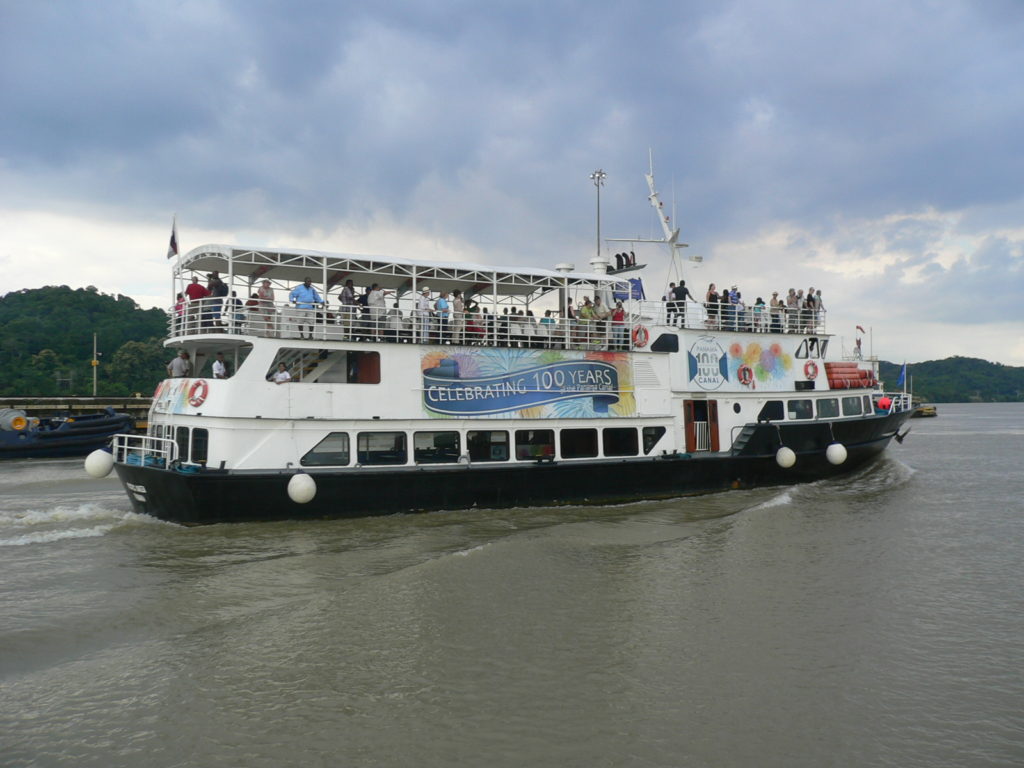
The Pacific Queen (36.3 x 7.6 metres) was designed specifically for day tours and cruises. It is a Norwegian built cruiser with capacity for 300 passengers.
Cruises offered through Panama Marine Adventures (www.pmatours.net).
Tourist Boat Islamorada
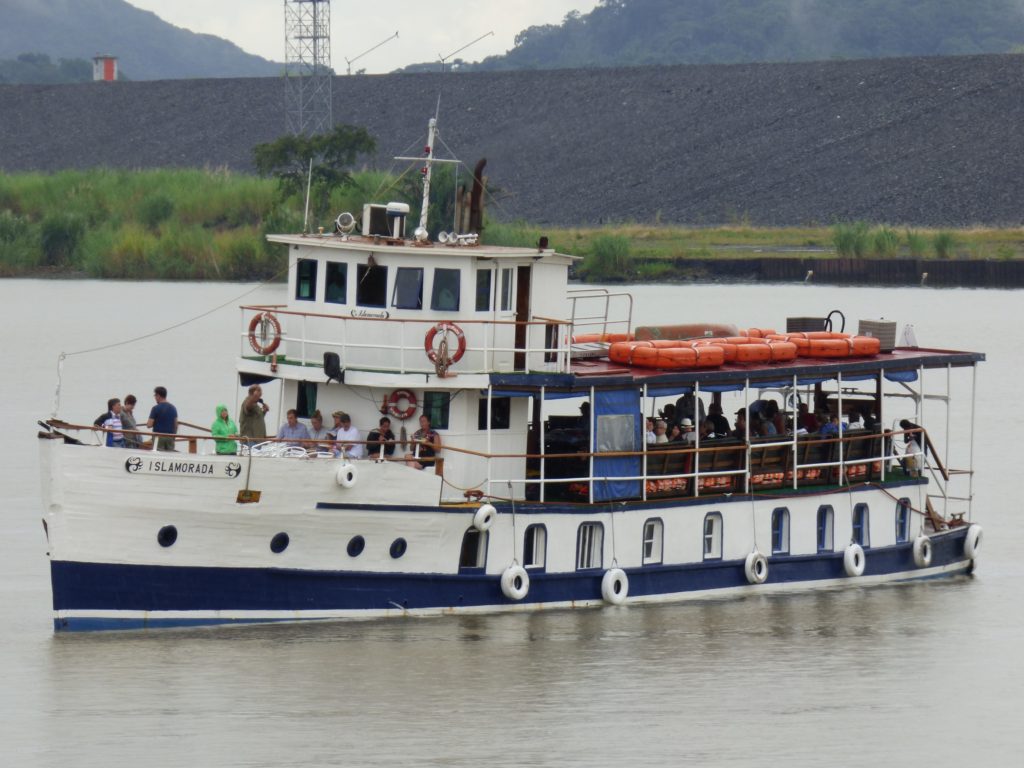
After passing Gamboa you may be fortunate enough to see the tourist vessel Islamorada plying its trade. This vessel has a very colourful history and has completed more Canal transits than any other non-ACP vessel.
The 94-tonne, 96-metre-long Islamorada began sailing in March 1912 under the name “Santana,” after construction in a New England shipyard.
One of her more infamous owners was Al Capone who spared no expense fitting out the vessel. She was used as a ‘rum runner’ transporting rum and whiskey from Cuba and the Dominican Republic to the Florida Keys during the Prohibition era. Following Capone’s incarceration in Alcatraz the vessel was requisitioned for use in World War II by the US Navy.
She arrived in Panama in the 1960s to serve as a floating hotel for sport fishing and was later acquired by present owners Canal and Bay Tours, who ran Canal cruises three or four times a week until the pandemic interrupted operations.
Update from Canal and Bay Tours in 2022: “The Isla Morada was pulled out of the water and is in the harbor of Colon 2000 and will be fixed up as an Al Capone museum and cocktail party area for next year”
Cruise Ship Discovery

M/V Discovery is a 33m/110-foot purpose built catamaran that offers seven day cruises around Panama and through the Canal from March to November. She accommodates 24 guests in 8 queen and 4 twin cabins.
They go through the Panama Canal, and also visit an Embera tribe in the Darien, stop at Barro Colorado and explore the Chagres River.
Cruises were offered through Panama Marine Adventures (www.pmatours.net/discovery), but the ship caught fire in 2020 and was extensively damaged.
Smaller Tourist Boats
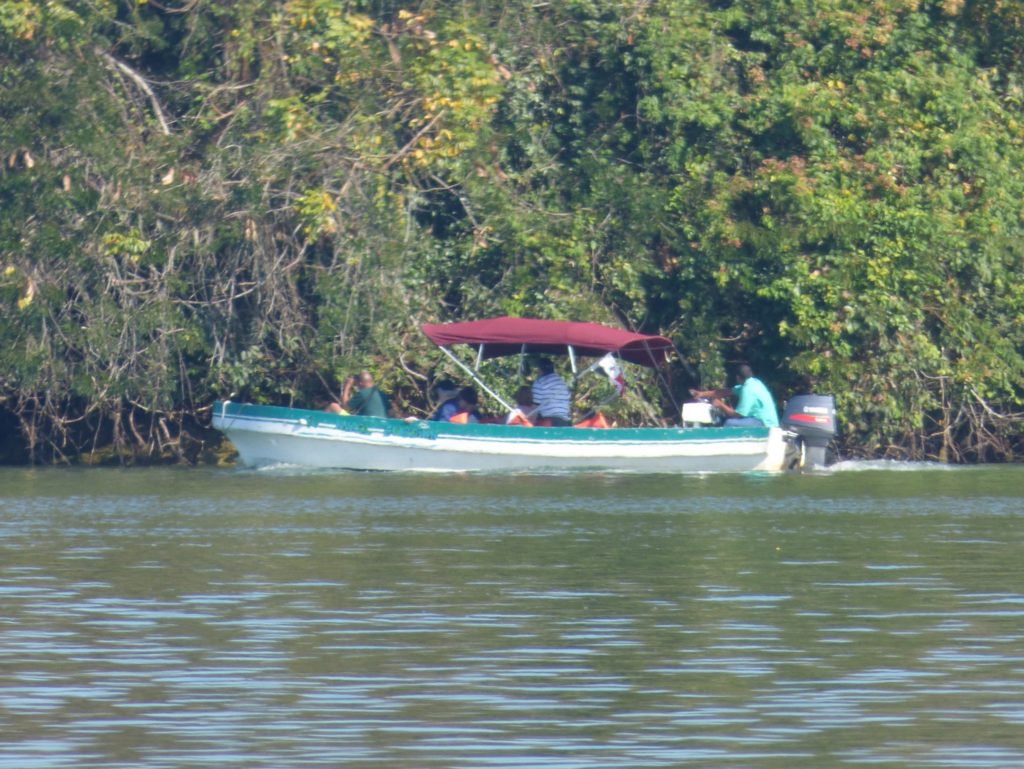
You might see smaller boats like this one on Lake Gatun. These are tourist boats taking people to see the monkeys, crocodiles and other animals that live in the rainforest.
Private Yachts
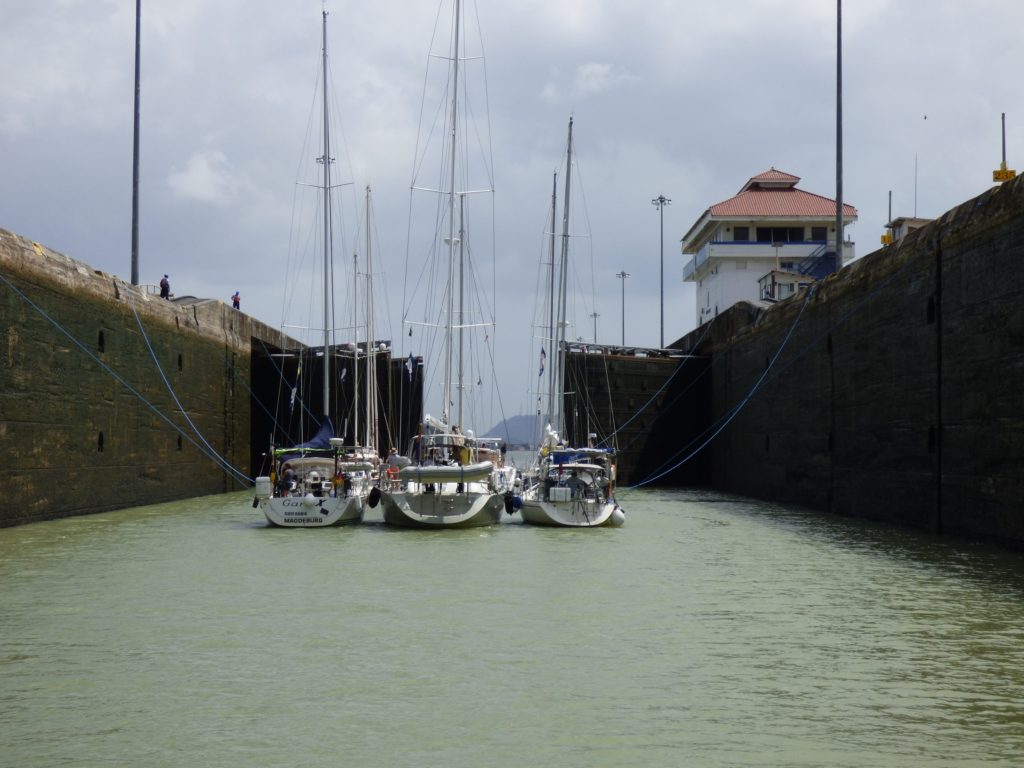
As part of the ‘spirit of the Canal’, private yachts are permitted to transit the Canal. A big ship will pay hundreds of thousands of dollars per transit, while a private yacht pays around US$2,000.
Back to Cruise Transit